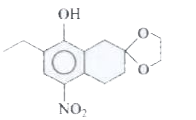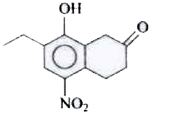Predict the major product formed when 2 - methyl-3-pentanol is dehydrated with alumina.
To predict the major product formed when 2-methyl-3-pentanol is dehydrated with alumina, we can follow these steps:
Step 1: Identify the Structure of 2-Methyl-3-Pentanol
2-methyl-3-pentanol has the following structure:
- The longest carbon chain consists of 5 carbons (pentanol).
- There is a methyl group (CH₃) on the second carbon.
- The hydroxyl group (OH) is on the third carbon.
The structure can be represented as:
CH3|CH3−CH−CH−CH2−CH3|OH
Step 2: Understand the Dehydration Reaction
Dehydration of alcohols typically involves the elimination of a water molecule (H₂O) from the alcohol. In this case, the hydroxyl group (OH) and a hydrogen atom (H) from an adjacent carbon will be removed.
Step 3: Determine Possible Elimination Sites
In 2-methyl-3-pentanol, the hydroxyl group is on the third carbon. The adjacent carbons (2 and 4) can provide hydrogen atoms for elimination.
Step 4: Identify the Major Product
When dehydration occurs, there are two possible elimination pathways:
1. Elimination of OH from the third carbon and H from the second carbon, leading to the formation of a double bond between the second and third carbons.
2. Elimination of OH from the third carbon and H from the fourth carbon, leading to the formation of a double bond between the third and fourth carbons.
However, the major product will be the more stable alkene. According to Zaitsev's rule, the more substituted alkene is favored.
- The first pathway leads to 2-methyl-2-pentene:
CH3∣CH3−C=CH−CH2−CH3
- The second pathway leads to 2-methyl-1-pentene:
CH3∣CH3−CH=CH−CH2−CH3
The 2-methyl-2-pentene is more substituted (the double bond is between the second and third carbons, which are both attached to alkyl groups), making it the major product.
Conclusion
The major product formed when 2-methyl-3-pentanol is dehydrated with alumina is 2-methyl-2-pentene.
---
2-methyl-3-pentanol has the following structure:
- The longest carbon chain consists of 5 carbons (pentanol).
- There is a methyl group (CH₃) on the second carbon.
- The hydroxyl group (OH) is on the third carbon.
CH3|CH3−CH−CH−CH2−CH3|OH
Dehydration of alcohols typically involves the elimination of a water molecule (H₂O) from the alcohol. In this case, the hydroxyl group (OH) and a hydrogen atom (H) from an adjacent carbon will be removed.
In 2-methyl-3-pentanol, the hydroxyl group is on the third carbon. The adjacent carbons (2 and 4) can provide hydrogen atoms for elimination.
When dehydration occurs, there are two possible elimination pathways:
1. Elimination of OH from the third carbon and H from the second carbon, leading to the formation of a double bond between the second and third carbons.
2. Elimination of OH from the third carbon and H from the fourth carbon, leading to the formation of a double bond between the third and fourth carbons.
CH3∣CH3−C=CH−CH2−CH3
- The second pathway leads to 2-methyl-1-pentene:
CH3∣CH3−CH=CH−CH2−CH3
The major product formed when 2-methyl-3-pentanol is dehydrated with alumina is 2-methyl-2-pentene.
Similar Questions
Knowledge Check

Major product formed is :A B
B C
C D
D
Predict the major product of reaction:
 A
A B
B C
C D
D
Predict the major product of the reaction.
 A
A B
B C
C D
D
The predominant product formed when 3− methyl −2−pentene reacts with HOCl is
View SolutionPredict the major product of given reaction :

View SolutionPredict the major product of given reaction :

View SolutionPredict the major product ofthe given reaction.

View SolutionThe major product formed in the reaction

View Solution


